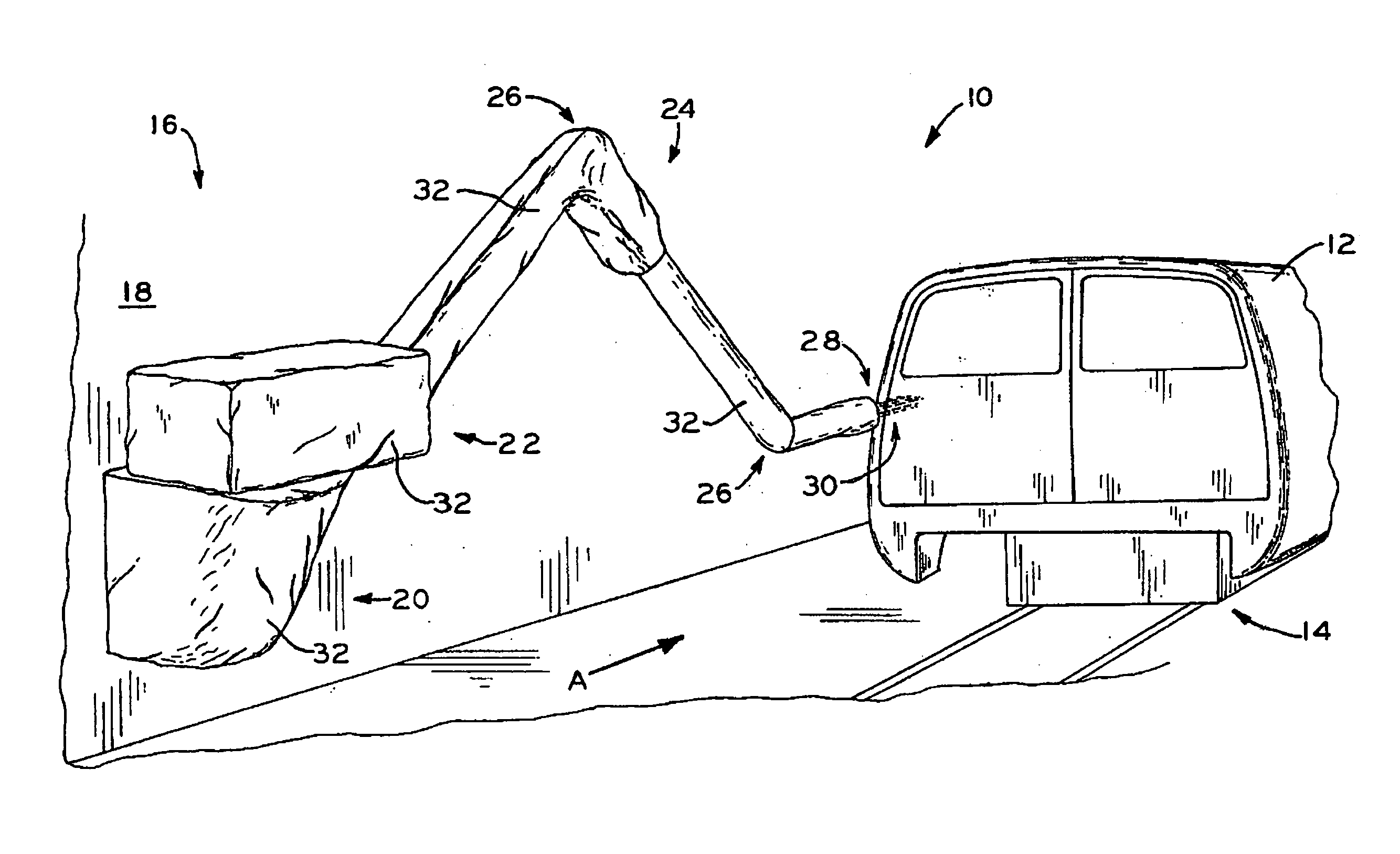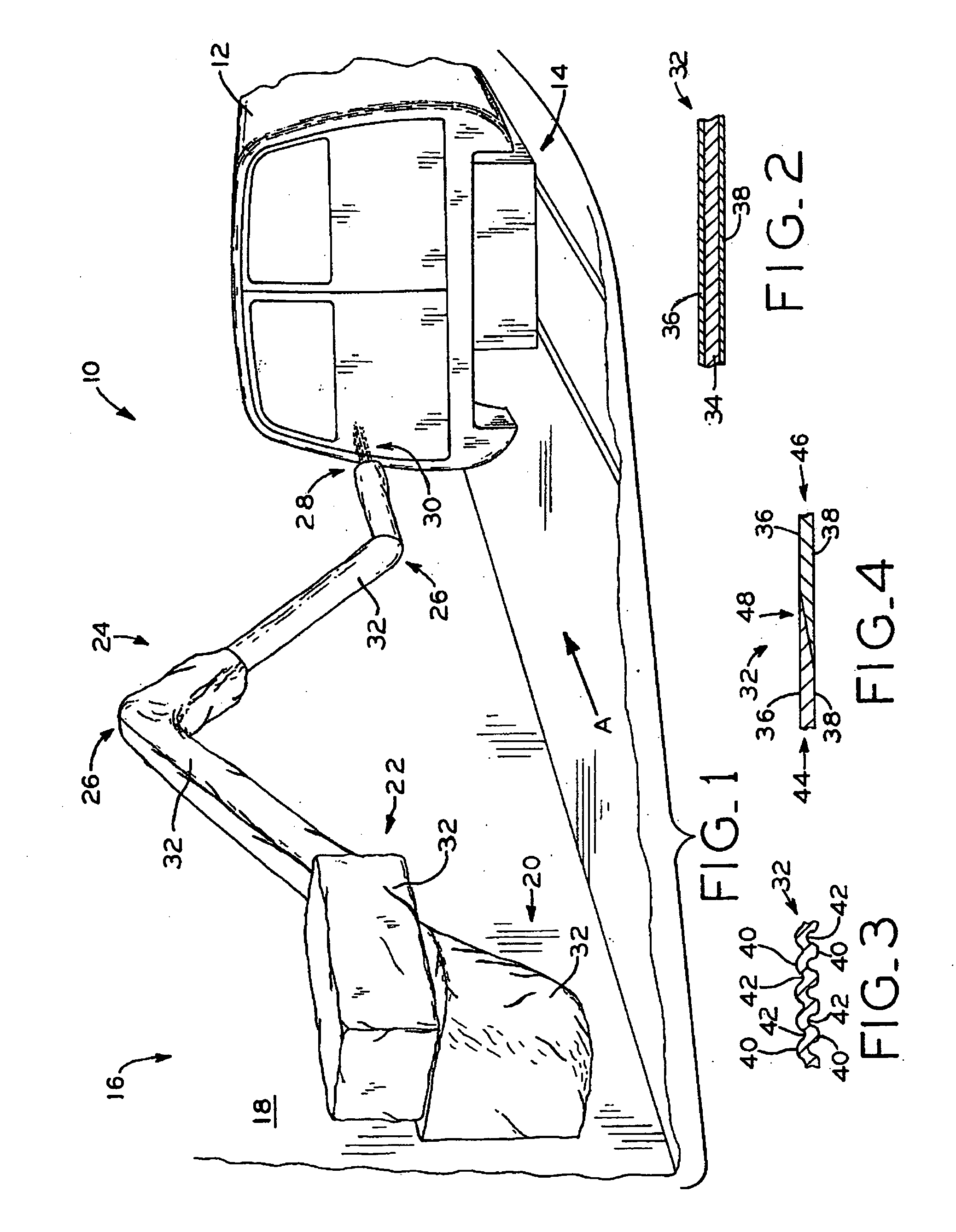Polymeric cover for robots having an increased total surface energy
a technology of polymer and surface energy, which is applied in the field of robot cover with spray nozzle, can solve the problems of additional maintenance work to remove paint, dust, or other debris, and combined particles with freshly painted surfaces may require repainting, so as to increase the surface energy of the polymer, enhance the ability to retain residue, and increase the wettability and adhesion of the polymer.
- Summary
- Abstract
- Description
- Claims
- Application Information
AI Technical Summary
Benefits of technology
Problems solved by technology
Method used
Image
Examples
Embodiment Construction
[0023]The embodiments disclosed below are not intended to be exhaustive or limit the invention to the precise form disclosed in the following detailed description. Rather, the embodiments are chosen and described so that others skilled in the art may utilize its teachings.
[0024]Referring to FIG. 1, paint booth 10 is shown including vehicle body 12 positioned on conveyor 14. Conveyor 14 moves vehicle body 12 along the assembly line to various assembly stations. Additionally, robot 16 is secured within paint booth 10 to wall 18. Robot 16 may be a flexible automation robot, i.e., a robot capable of articulation about a plurality of axes, or a hard automation robot, i.e., a robot that is generally stationary or capable of movement along only a single axis. Robot 16 is secured to wall 18 via base 20. Connected to base 20 of robot 16 is body 22 and arm 24. Body 22 may be actuated to rotate relative to base 20. Similarly, arm 24 may be actuated to move at pivots 26. The actuation of body 2...
PUM
| Property | Measurement | Unit |
|---|---|---|
| energy | aaaaa | aaaaa |
| surface area | aaaaa | aaaaa |
| surface area | aaaaa | aaaaa |
Abstract
Description
Claims
Application Information
 Login to View More
Login to View More - R&D
- Intellectual Property
- Life Sciences
- Materials
- Tech Scout
- Unparalleled Data Quality
- Higher Quality Content
- 60% Fewer Hallucinations
Browse by: Latest US Patents, China's latest patents, Technical Efficacy Thesaurus, Application Domain, Technology Topic, Popular Technical Reports.
© 2025 PatSnap. All rights reserved.Legal|Privacy policy|Modern Slavery Act Transparency Statement|Sitemap|About US| Contact US: help@patsnap.com


